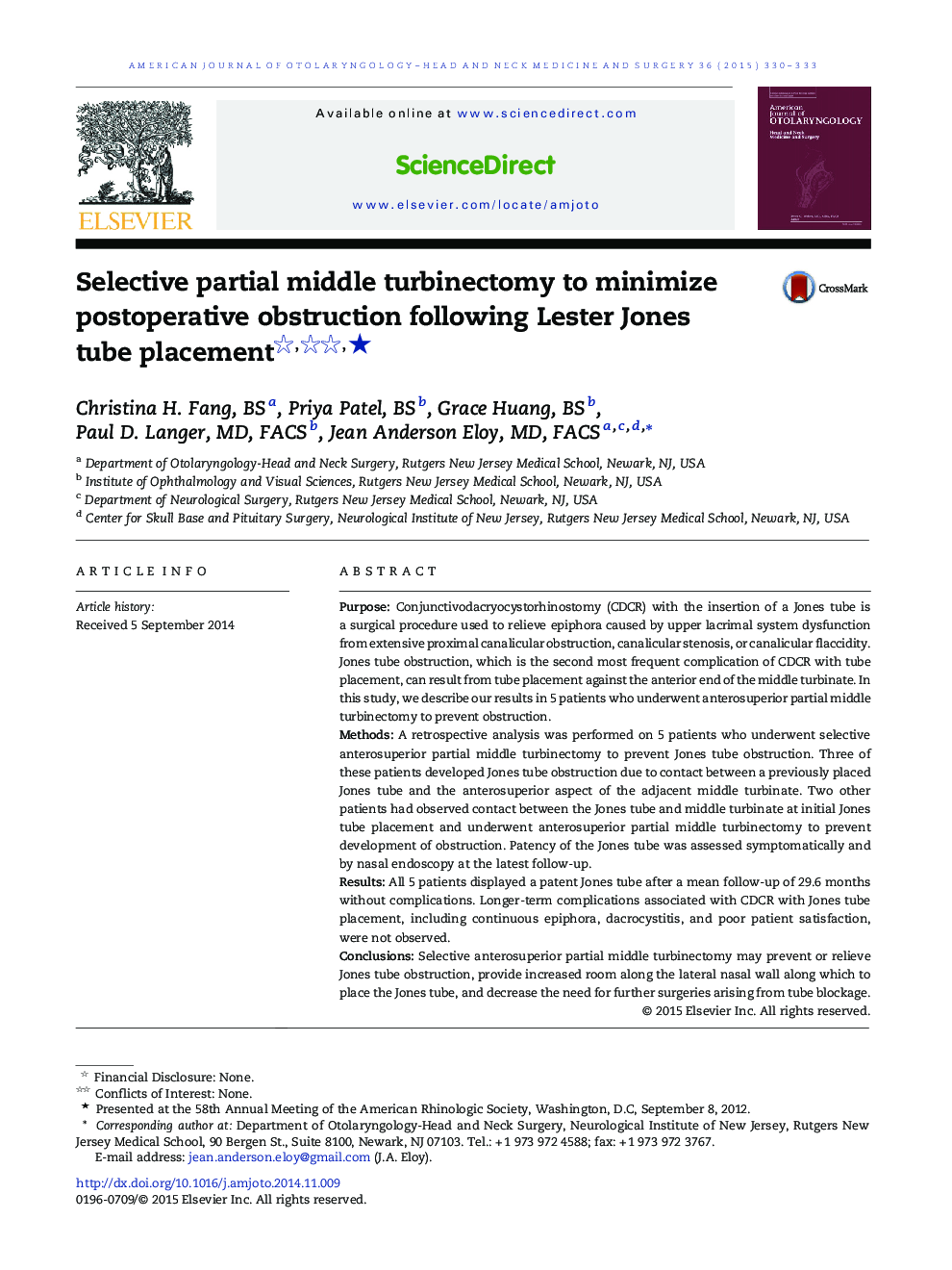| Article ID | Journal | Published Year | Pages | File Type |
|---|---|---|---|---|
| 4103529 | American Journal of Otolaryngology | 2015 | 4 Pages |
PurposeConjunctivodacryocystorhinostomy (CDCR) with the insertion of a Jones tube is a surgical procedure used to relieve epiphora caused by upper lacrimal system dysfunction from extensive proximal canalicular obstruction, canalicular stenosis, or canalicular flaccidity. Jones tube obstruction, which is the second most frequent complication of CDCR with tube placement, can result from tube placement against the anterior end of the middle turbinate. In this study, we describe our results in 5 patients who underwent anterosuperior partial middle turbinectomy to prevent obstruction.MethodsA retrospective analysis was performed on 5 patients who underwent selective anterosuperior partial middle turbinectomy to prevent Jones tube obstruction. Three of these patients developed Jones tube obstruction due to contact between a previously placed Jones tube and the anterosuperior aspect of the adjacent middle turbinate. Two other patients had observed contact between the Jones tube and middle turbinate at initial Jones tube placement and underwent anterosuperior partial middle turbinectomy to prevent development of obstruction. Patency of the Jones tube was assessed symptomatically and by nasal endoscopy at the latest follow-up.ResultsAll 5 patients displayed a patent Jones tube after a mean follow-up of 29.6 months without complications. Longer-term complications associated with CDCR with Jones tube placement, including continuous epiphora, dacrocystitis, and poor patient satisfaction, were not observed.ConclusionsSelective anterosuperior partial middle turbinectomy may prevent or relieve Jones tube obstruction, provide increased room along the lateral nasal wall along which to place the Jones tube, and decrease the need for further surgeries arising from tube blockage.
